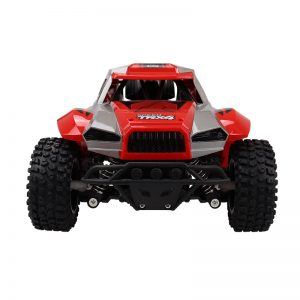1. Classification by toy function 1. Voice and cultural toys: toys that can make children more acute, learn new character groups, promote language expression and organizational skills, and practice preschool exercises, such as story tapes, story cards, and encouraging painting Drawing board etc. 2. Science toys: science toys that can attract children to observe, compare, collect and analyze. In addition to arousing children’s enthusiastic curiosity, it can also allow them to develop the concept of observing, analyzing, collecting data, doing it by hand, and seeking truth from facts, such as the mirror, the kaleidoscope, and various specimens. 3. Action toys: These toys can exercise the child’s large muscles and the coordination of various parts of the body, such as baby crawling toys, various carts, carts, rideable bicycles, throwing darts, etc. 4. Operational toys: These toys make the small muscles of children’s fingers more flexible, and promote the coordination of eyes and hands, such as cat soil, threading, beading, stacking and combining building blocks, etc. 5. Art toys: can cultivate creativity and the ability to read, write, and discover the beautiful things in life. 6. Social toys: including dolls, stuffed toys, etc., as well as toys designed in the context of life, such as playing toys in supermarkets and airports, allowing children to experience the adult’s life world while expressing their emotions, and to understand their surroundings at the same time And absorb relevant life experience. 2. According to the age of the child 0-1 years old: audio-visual touch toys-the newborn baby develops rapidly in physical and psychological, the function of the body and nervous system develops rapidly, and the visual and auditory senses are gradually improved. At this time, children are more sensitive to some visual color shaking and auditory sounds, so they can choose some shaking and sound toys. Don’t think that hanging the carousel toy on the stroller is just a decorative function. By shaking the toy, it can attract the child’s attention. In addition, through traditional tambourine and other sound and shaking toys, it can attract children and take them to practice turning, crawling, standing and even walking, and promote the growth of thinking. 1-2 years old: push-pull, ball toys, building block toys-children at this stage start to learn to walk independently. The guiding role of tambourine toys is no longer enough. Some push-pull and ball toys should be added to help children walk independently Keeping balance during the process, in addition, it can also meet the needs of children climbing, throwing, jumping and so on. In addition, building block toys can promote children’s cognition of shapes and colors, and give children a preliminary intellectual enlightenment. 1-2 years old children are in the stage of learning language, vocal toys can choose songs with sounds, words or simple melody. Of course, the best language enlightenment comes from parents, so that children can gradually master language communication skills in imitation learning. 2-4 years old: shaking, balancing toys, colorful toys-children aged 2-4 are more sensitive to visual senses, and stimulation of different colors can promote the formation of children’s imagination and creativity, so toys at this stage should also be colourful. In addition, with few toy styles and shapes, children can feel different changes in touch when they touch them, which enhances the overall development of the child’s brain. In addition, the language comprehension ability is further upgraded. At this time, it is appropriate to buy some brightly colored, simple and large-picture word toys or word dice for the child, so that the child will gradually become familiar with the text environment. Rocking toys such as wooden horses and swings are always children’s favorites. They can not only bring children happy time, but also cultivate children’s balance ability, physical coordination and problem-solving ability. 4-6 years old: plush toys, models, play house toys-as children master independent walking ability and preliminary language ability, children’s thinking ability is gradually cultivated. Children always like to imitate adults, and gradually form their own conscious judgment and personality abilities through learning the object of imitation. At this stage, many children like to play house, such as plush toys, Barbie dolls, etc. They are often regarded as “children” in the house, and children play the role of “adults”, and through some toy kitchens and furniture Models, car models, etc., set your own Sims. By providing children with toys in this area, children’s independence and social skills can be cultivated, and the formation of children’s emotional intelligence can be accelerated. 1. Children’s toys can mobilize the enthusiasm of children’s activities: children’s physical and mental development is realized in activities. Toys can be freely manipulated, manipulated and used for children, which conform to the children’s psychological hobby and ability level. It can meet their needs for activities and increase their enthusiasm for activities. For example, “rocking horse” toys, children will naturally ride on and swing back and forth, which not only meets their activity requirements, but also makes them have positive and happy emotions, so they will not get tired of playing for a long time. Another example is “doll” toys, which can cause children to do a variety of activities. Children of all ages can play games with dolls according to their own life experiences, which can vary from simple to complex. 2. Children’s toys can enhance perceptual understanding: toys have the characteristics of intuitive images, and children can touch, hold, listen, blow, watch, etc., which is conducive to the training of various sense organs. Such as colored towers, blow molding toys, various dolls and toy animals are conducive to visual training; eight-tone bears, small pianos, tambourines, small horns, etc. can train hearing; building blocks, plastic pieces, and structural models can be developed Space perception; various jigsaw puzzles, inlaid toys, soft plastic toys, etc. can exercise the sense of touch; pulling duck carts, trolleys, tricycles, two-wheelers, etc. contribute to the development of athletic ability. Toys not only enrich children’s perceptual knowledge while developing sensory and motor abilities, but also help to consolidate the impression that children obtain in life. When children do not have extensive exposure to real life, they learn about the world through toys. 3. Children’s toys can cause children’s association activities: such as hospital toys, doll house toys can cause children to associate hospitals and families, and can encourage children to develop creative role games; some labor tool toys can cause children to plant trees , Digging rivers, building and other simulated labor. Some toys are specially used for thinking training, such as various chess, various intellectual toys, etc., which can improve children’s ability of analysis, synthesis, comparison, judgment, and reasoning, and cultivate the depth, flexibility and agility of thinking. 4. Encourage children to actively engage in activities such as thinking and imagination, and express them through other activities of hands or body: such as playing with “sculpture” toys, children must conceive, imagine, and choose materials to achieve the established purpose; hands-on assembly At this time, it is necessary to use both hands and brains. Young children will also encounter some difficulties when using toys. These difficulties require them to rely on their own strength to overcome and persist in completing tasks, thus cultivating the excellent quality of overcoming difficulties and working hard. 5. It is helpful to cultivate the collective concept and spirit of cooperation: some toys are required for children to use together. Such as “phone” toys, there must be two parties on the phone, and even a pager, which can help children understand the learning and life experience, practice and cooperate with peers. Another example is the “long rope” toy, which itself requires many children to use collectively. In the long rope skipping game, the children coordinate each other’s movements and strengthen the collective concept. Attachment: The educational role of children’s toys 1. Using toy games is not just for playing, but a good way to educate children. 2. The use of toy games can cultivate good personalities of infants and young children, and is an effective means of ideological and moral education for young children. 3. Use toy games to educate children on aesthetics. First, choose toys that are suitable for children: Choose toys to suit the needs of children of different ages, and the age characteristics of children’s psychological and physical development. For example, before the child is 1 year old, the sensory organs and activity abilities are relatively weak. Therefore, the toys purchased at this stage should help strengthen the child’s visual and auditory development of color, distance, sound, etc., like Colorful balloons, bell stalls, etc. Second, the choice of toys must pay attention to safety and hygiene: the toys you buy should be non-toxic and sterile and easy to clean; the edges of the toys should be neat and soft, without hard and sharp shuttle corners. For young children, don’t play with small toys such as glass balls and plastic balls for them to avoid accidents in the population. Some toys rotate too fast, or are easy to hurt others, so you should pay attention to them when buying and using them. Third, avoid one-sided pursuit of high-end, toys are not as high-end as possible: in fact, many high-end electronic toys, because of their high degree of “automation”. Children often become general audiences, so that their ability to use their hands and brains cannot be cultivated; at the same time, the functions of high-end toys are too single, which easily restricts children’s imagination. For older children, you can buy more toys that are conducive to the development of intelligence. In short, toys are the best tool to develop children’s intelligence. Choosing suitable toys for children of different ages will not only make children’s life full of joy. More importantly, they will develop children’s intelligence.



























